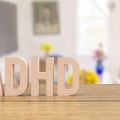Long-term effects Research on nootropics remains limited, meaning there is a lot of uncertainty about the side effects that medications can cause if used on an ongoing basis. It is recommended that these drugs be used only with a prescription from a doctor to avoid any potential harm. As one of the best natural nootropics for a variety of cognitive health benefits, Bacopa Monnieri offers a valuable lesson in patience. Compared to many other bioactive herbal nootropics, this Ayurvedic adaptogen is stubborn in releasing its brain-stimulating effects.
However, once achieved, the cognitive enhancement results of the Bacopa supplement in the long term are undeniable. The substances used in the pills may not be nootropics, but substitutes that could easily be harmful to health. Unlike prescription drugs that are clinically tested and regulated, there is no guarantee that these substances will be safe for you, either in the short or long term. Prescription nootropics consist largely of stimulants such as those in some ADHD medications.
Although they work well for many people with ADHD, they are not recommended for others who simply want to improve their concentration and attention. Many college students receive this type of drug illegally and, although they seem to help in the short term, there are serious risks. Side effects may include insomnia, blurred vision, high blood pressure, fast heart rate, circulation problems, and addiction. Misuse of nootropics, any substance that can alter, improve or increase cognitive performance, primarily through stimulation or inhibition of certain neurotransmitters, can be potentially dangerous and harmful to the human brain, and to certain people with a history of mental or consumption disorders of substances.
could be particularly vulnerable to adverse effects. We describe four cases of probable psychiatric adverse effects induced by nootropics to illustrate this theory. As far as we know, this has not been previously reported in the formal medical literature. We briefly describe the most common classes of nootropics, including their postulated or proven methods of action, their desired effects and their adverse side effects, and provide a brief discussion of the cases.
Our goal is to raise awareness among physicians in general and psychiatrists and addiction specialists in particular about the potentially dangerous phenomenon of unsupervised use of nootropics among young adults who may be especially vulnerable to the negative effects of nootropics. The general evidence on the benefits of nootropics in healthy people seeking mental improvement remains controversial. In addition, it is important to note that nootropics are not free of adverse effects. Table 1 summarizes the mechanisms of action, the desired neuropsychiatric effects, and the adverse effects of the common classes of nootropics listed below.
Despite improving wakefulness, adverse effects of armodafinil usually include headache, nasopharyngitis and diarrhea, 6 Side effects. Citicoline has been found to cause gastrointestinal discomfort, headache, insomnia, myalgia, agitation, fatigue and tremors, 10 Adverse effects. Piracetam users have reported symptoms of psychomotor agitation, dysphoria, tiredness, dizziness, memory loss, headache, and diarrhea. Many users reported that they had not felt any cognitive enhancement or psychedelic effects after taking piracetam, 17-19 Adverse effects.
Ampakines have also been found to cause headaches, drowsiness and nausea 21. Despite the long-term improvement of cortical neuronal potentiation with the use of ampacines, changing cortical neuronal plasticity in favor of long-term potentiation could lead to alterations in spatial memory and perhaps motor function. 22 Adverse effects. Adverse reactions to cerebrolysin include vertigo, agitation, and feeling hot. Two of the cases were taking psychotropic medications, which may have had drug interactions with nootropics, causing the adverse effects.
There is also the possibility of undisclosed or undetected substance abuse as a causal factor. A major limitation is the inability to definitively determine the actual composition of nootropics, dosage and frequency of use. Healthcare providers in general, and specifically those in the fields of mental health and substance abuse, should note that nootropic use is an under-recognized and evolving problem. The use of nootropics should be considered in cases where there are sudden or unexplained exacerbations of psychiatric symptoms in patients who have remained stable and who have been on medication.
It is also important to remember that most nootropics are not detected in standard drug toxicology screening tests. We have very little clinical information on how nootropics can interact with psychotropics (or other medications) and potentially cause adverse physical and psychiatric side effects. Finally, because nootropics are often obtained through loosely regulated sources, such as online sellers, it is possible that other psychoactive compounds may be substituted for the advertised nootropics. Young adults, especially those with a history of mental health or substance abuse disorders, may be at particular risk of adverse effects from nootropic use and should be informed of the potential harm of nootropic misuse.
Prescription nootropics are drugs that have stimulant effects. They can counteract the symptoms of medical conditions such as attention deficit hyperactivity disorder (ADHD), narcolepsy or Alzheimer's disease. The long-term protective advantages of the antioxidant status of this extract are aggravated by the indirect promotion of brain-derived neurotropic factor (BDNF) nootropics. All cases improved rapidly and without complications with symptomatic treatment and discontinuation of nootropics.
In addition, a study by experts from the Manipal Academy on the use of cognitive enhancers in healthy people found a shortage of literature to confirm the safety of nootropics in the long term. From a medical point of view, the term “nootropics” refers to a different chemical that works to improve cognitive performance. Natural nootropics work subtly, enhancing mental performance in ways that feel good, but require continuous daily effort to achieve maximum effect. The term “nootropic” can also refer to natural or synthetic supplements that increase mental performance.
The best approach to providing a safe, yet effective supplement is to stack only research-backed nootropics in their highest quality forms (e. Some nootropic users seem to feel that, like most other supplements, these “brain stimulators” should be cycled (periods of use interspersed with regular “rest” periods) to maintain their long-term effectiveness. A rough translation of the word “nootropic” comes from Greek to “bend or shape the mind”. For the user of nootropics, the effects of long-term nootropic use can be almost divine in their cumulative effect.
We have reviewed 7 placebo-controlled human studies on Omega 3, in which 646 participants received the nootropic. While many of these long-acting nootropics lack the appeal of convenient, fast-acting cognitive enhancers, their protective and regenerative benefits may theoretically help eliminate the conditional needs for quick-fix enhancers in the future. However, the nootropic benefits of phosphatidylserine supplementation range from short to long term. Similarly, doctors are also advised to be very careful when prescribing nootropics to patients with psychiatric symptoms.
. .




